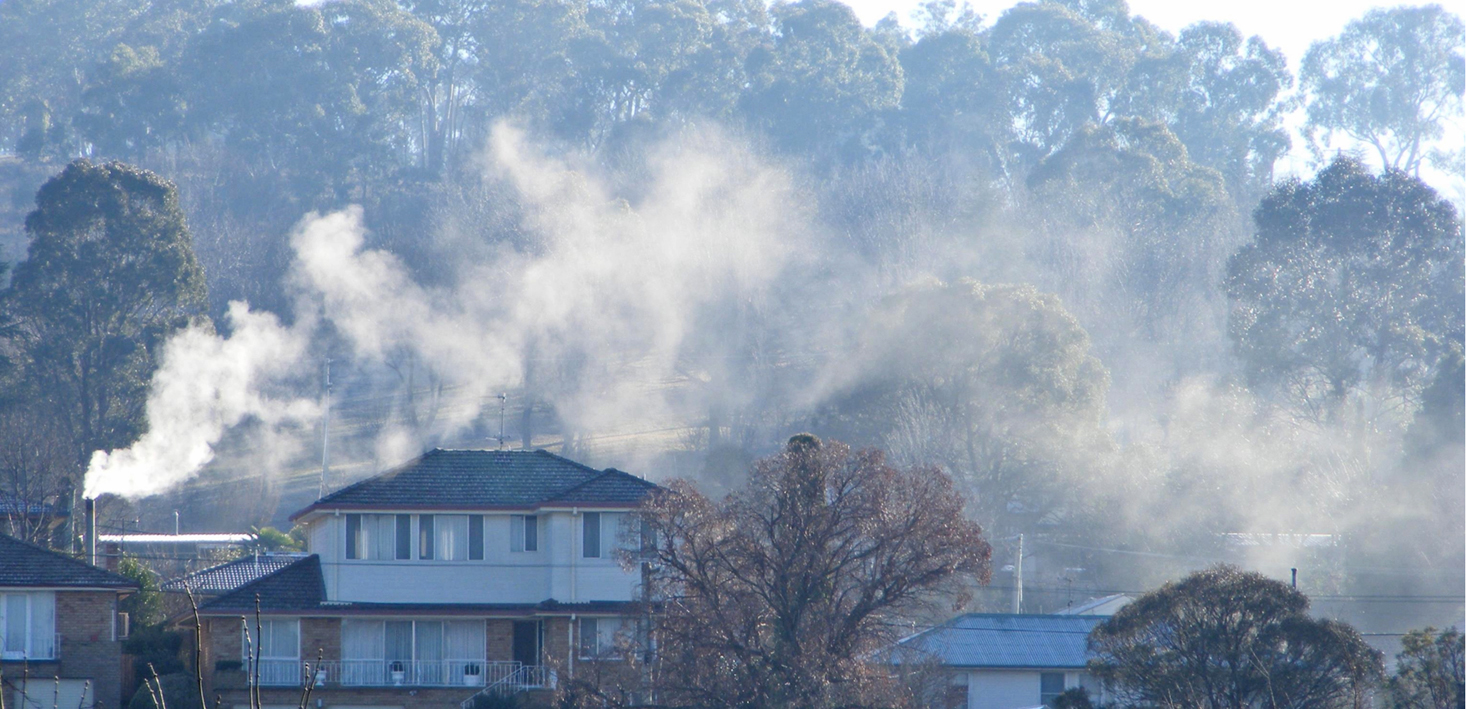 A graph from the NSW Government’s 2018 Annual Air Quality Statement shows that Armidale had many more exceedances of the daily average PM2.5 standard than any other government station, all due to the non-exceptional event of wood heating in winter. The majority of exceedances at other sites were due to exceptional events.
A graph from the NSW Government’s 2018 Annual Air Quality Statement shows that Armidale had many more exceedances of the daily average PM2.5 standard than any other government station, all due to the non-exceptional event of wood heating in winter. The majority of exceedances at other sites were due to exceptional events.
In New Zealand (NZ) real-life emissions averaged 8 times worse than wood heater lab tests. There are no tests in Australia of wood heaters satisfying current standards, so the NZ studies are the best available evidence of real-life pollution. The studies show that the average brand-new wood heater emits more health-hazardous PM2.5 pollution in the first hour of lighting than the average petrol car in an entire year.
This suggests that the most important strategy to improve our air is not to allow new wood heaters to be installed until a new standard has been developed to ensure they do not damage the health of people living nearby. Research in NZ shows that a single wood stove per hectare satisfying NZ’s even stricter standards (than currently required in Australia) increases the risk of a child under 3 needing hospital treatment.
If Armidale city residents understood the impact of woodsmoke pollution on their heath – that it affects children’s bodies and brains, how it speeds up global warming and how it increases the risk of heart attacks, strokes and dementia as well as lung diseases many would consider switching to non-polluting heating.
Not allowing new wood heaters is an essential first step in reducing wood heater pollution. The next step of phasing our wood stoves could be achieved by helping people understand the health and environmental effects of wood heating together with subsidies for energy-efficient non-polluting heating. This happened in Launceston in the early 2000s. About 2,000 households received subsidies to switch to non-polluting heating. A further 2,000 households switched entirely at their own expense. The resultant 40% reduction in woodsmoke pollution in Launceston reduced deaths in winter from respiratory disease by 28% and cardiovascular disease by 20%. The cost was less than $21 per resident.
Efficient heat pumps (also called heater-air-conditioners or reverse cycle aircon) have very low running costs compared to buying firewood. Most of the heat is from renewable sources — they move air heated by the sun from outside to inside the home. Wood heaters, by contrast, emit methane, black carbon, carbon monoxide and CO2, so the average wood-heated home will cause more global warming over the next 20 years (the critical period if we are to keep global warming well below 2 degrees) than 50 similar homes heated by reverse cycle.
By Dr Dorothy Robinson
# Armidale recorded 32 days over the daily PM2.5 national standard from May to September, with four days in May, six days in June, 13 days in July, eight days in August and one day in September 2018. These were all most likely due to smoke from wood heaters, typically occurring overnight during cold, calm conditions, often with temperatures close to or below 0ºC.
